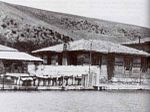Istanbul Health and Technology University

Istanbul Health and Technology University, was established by Neutec, Bilgiç Foundation and took its place in higher education to start its activities in the 2020-2021 academic year as a foundation university that gained public legal personality with "Additional Article 196 (Additional: 9/5/2018-7141/7 md)", "Article 13 of the law dated 25/3/2020 and numbered 7226" with its publication in the Official Gazette. Istanbul Health and Technology University started its education life with Topkapı Campus in Zeytinburnu. In the second academic year, it opened Merter Campus and provided education in two campuses until the 2023-2024 academic year. Since the 2023-2024 academic year, it continues its education at Sütlüce Campus. On 3 January 2024, with the handover ceremony held on 3 January 2024, the founding rector Prof. Dr. Seyhan Alkan handed over his duty to Prof. Dr. Buğra Özen, who was appointed instead.
Excerpt from the Wikipedia article Istanbul Health and Technology University (License: CC BY-SA 3.0, Authors, Images).Istanbul Health and Technology University
İmrahor Caddesi,
Geographical coordinates (GPS) Address Nearby Places Show on map
Geographical coordinates (GPS)
| Latitude | Longitude |
|---|---|
| N 41.0563 ° | E 28.95115 ° |
Address
Bilgi Üniversitesi
İmrahor Caddesi
34445 , Örnektepe (Örnektepe Mahallesi)
Turkey
Open on Google Maps





